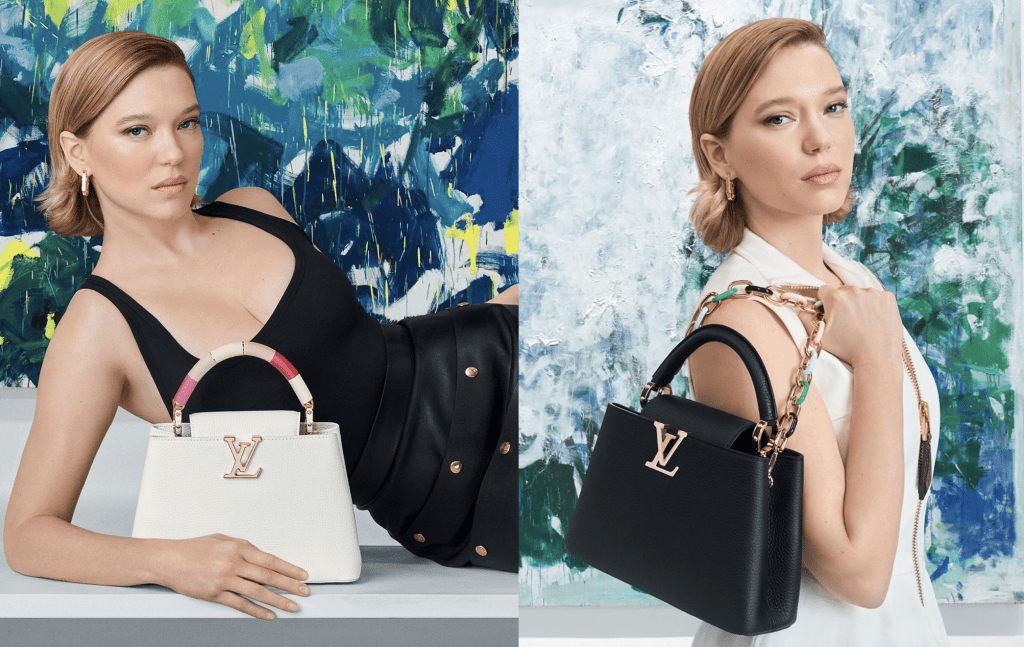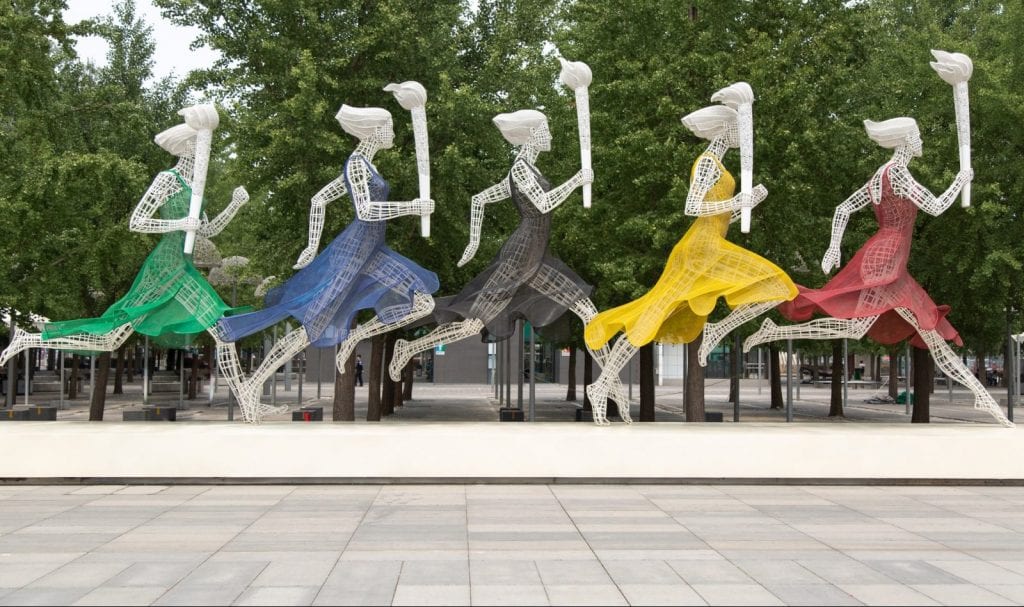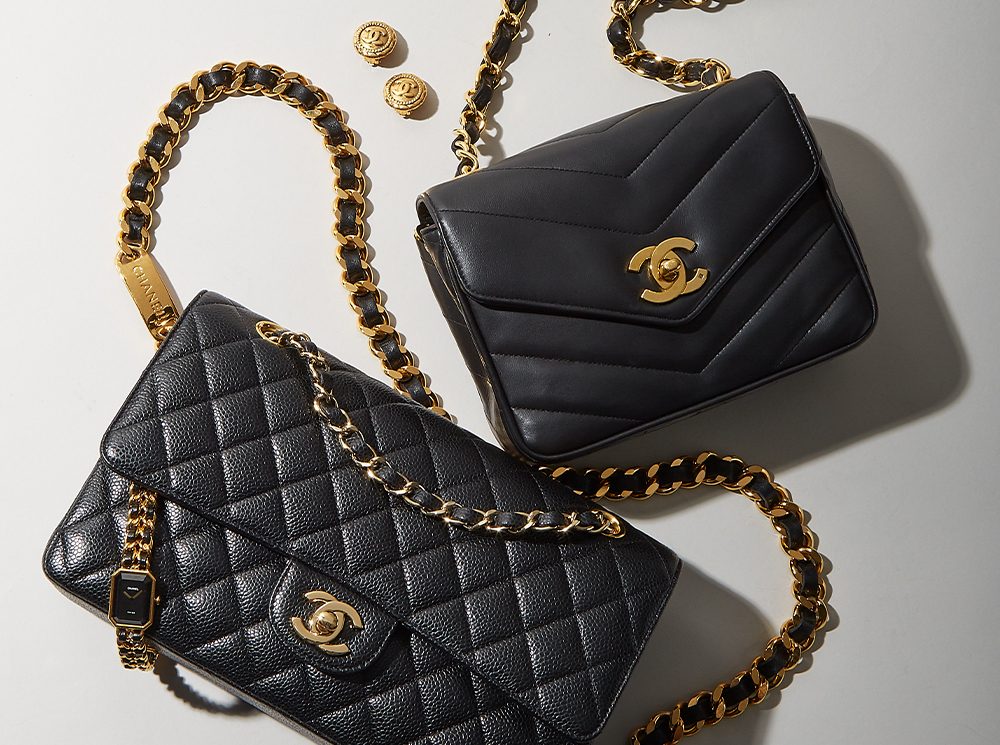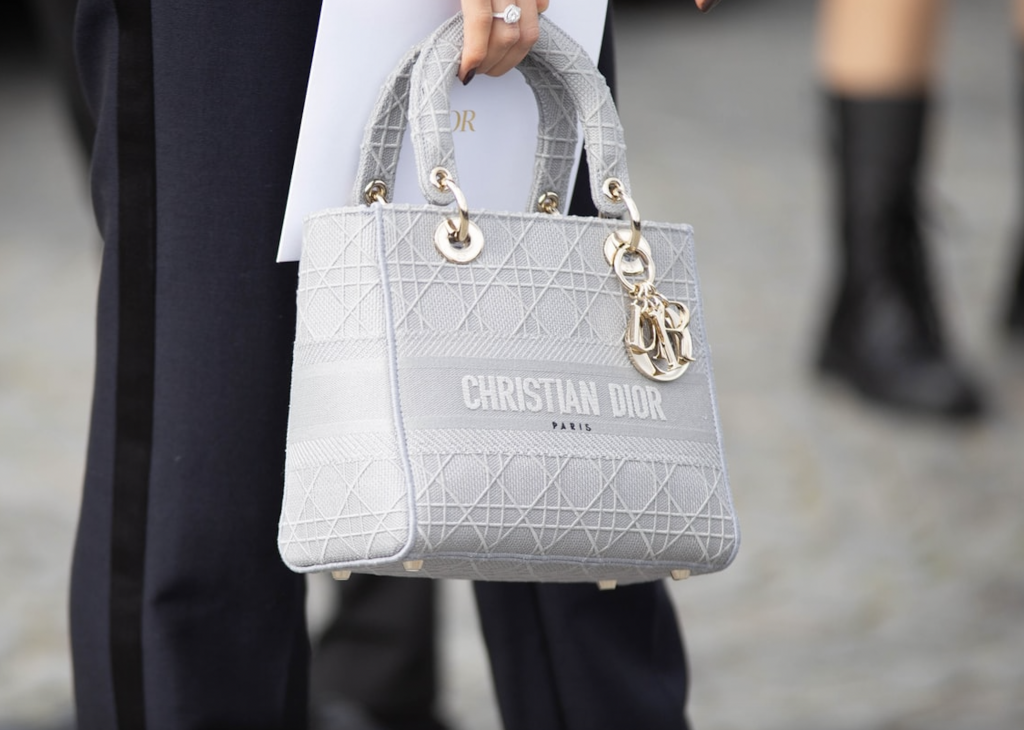An ad campaign starring Léa Seydoux has landed Louis Vuitton on the receiving end of copyright infringement allegations, with the Joan Mitchell Foundation sending a cease-and-desist demand to the French luxury goods brand on Tuesday, less than a day after the campaign was released. According to counsel for the New York-based Joan Mitchell Foundation, which acts as the administrator for all Mitchell’s intellectual property, Louis Vuitton is running afoul of the foundation’s rights in a trio of Mitchell’s paintings by prominently featuring the vibrantly hued works in the background of its Spring/Summer 2023 ad campaign after being denied authorization to do so by the foundation.
In a statement on Tuesday, the Joan Mitchell Foundation (“JMF”) asserted that in late 2022, “Louis Vuitton approached [it] to request permission to use works by Mitchell in an upcoming advertising campaign.” JMF says that it “denied this request in writing in accordance with its longstanding policy that images of the artist’s work be used only for educational purposes,” and echoed this same message to Louis Vuitton when the brand “subsequently reiterated the request … several times.”

Despite such denials, JMF claims that Louis Vuitton launched its campaign anyway and at least three of Mitchell’s works – “La Grande Vallée XIV (For A Little While)” (1983), “Quatuor II for Betsy Jolas” (1976), and “Edrita Fried” (1981) – “have been used without authorization.” As it turns out, all three of the paintings are “currently on view” at the LVMH-sponsored Fondation Louis Vuitton in Paris, and by permitting these works to be photographed “for this purpose and in this manner,” JMF claims that not only is LVMH-owned Louis Vuitton on the hook for copyright infringement, Fondation Louis Vuitton “is in violation of its agreement with JMF.”
If Louis Vuitton does not “promptly halt this campaign and cease the illegal use of Mitchell’s artworks,” JMF says that it “will promptly take further legal action to address this matter.” Meanwhile, a rep for the foundation told the New York Times that it is planning to send a separate cease-and-desist letter to the Fondation Louis Vuitton for breaching its agreement regarding the display of the paintings.
Copyright & Ad Campaigns
Hardly the first clash of its kind, a number of companies have been sued for copyright infringement in connection with their allegedly unauthorized reproduction of others’ copyright-protected artworks in the background of ad campaigns. (Copyright protection gives the holder a bundle of rights, including the exclusive rights to reproduce, display, and create derivative works based on the protected work, etc.)
In a suit that he filed in 2018, for instance, artist Anish Kapoor accused the National Rifle Association of copyright infringement over its depiction of his Cloud Gate sculpture in an ad campaign, arguing that the NRA “never asked [him] for permission to use the work and [he] never granted it – and never would have granted it.” The case settled later that year, and the NRA removed the image of Kapoor’s work from the video.
At the same time, an array of cases have centered on the use of large-scale murals and/or graffiti in companies’ ads, such as a Mercedes Benz social media campaign that featured works painted by Daniel Bombardier, James “Dabls” Lewis, Jeff Soto, and Maxx Gramajo. In response to the artists threatening it with copyright infringement claims, Mercedes filed a trio of ultimately-consolidated declaratory judgment suits against the artists in April 2019, urging a federal court in Michigan to find that the appearance of the murals in the background of its photos falls neatly within the realm of fair use. In particular, Mercedes argued that the murals were “not the centerpiece of the photos,” and instead, appeared “as part of the background.”
Counsel for Mercedes also argued that its ads included images that “differ visually” from the artists’ original murals, as its ads featured motion-simulating blurring, different angles, and cropping that (allegedly) created a different aesthetic than the murals, themselves. Again, that case settled (in June 2020), but not before the court refused to grant the artists’ motion to dismiss.
As distinct from the potential Louis Vuitton case, the Mercedes suit and others like it have “turned largely on whether the photographs at issue qualified for application of 17 U.S.C. § 120(a), which creates an exception to the copyright protection otherwise afforded to architectural works and expressly permits making, distributing and publicly displaying pictures, paintings, photographs or other representations of architectural works if the building in which the work is embodied is located in or ordinarily visible from a public place,” Morrison & Foerster’s Amber Harezlak and Aaron Rubin stated at the time.
Regardless, these cases and a prospective suit against Louis Vuitton will serve to caution companies from using others’ copyright-protected works (whether publicly displayed or not) in the background of their own works without clearing such uses with the relevant rights holders, particularly if the latter works are commercial in nature.
A rep for Louis Vuitton told the Times that it has “no comment” on the matter.











